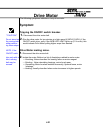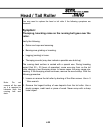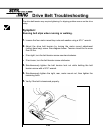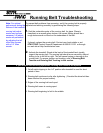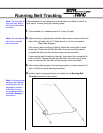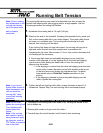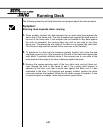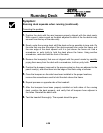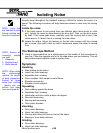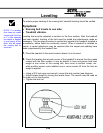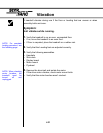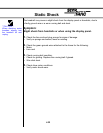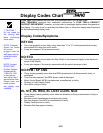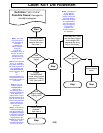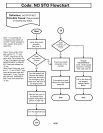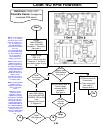
Isolating Noise
NOTE: Verify that
the treadmill is level
before isolating any
specific component
NOTE: Ensure all
assembly screws
are tight:
1. Handrails.
2. Display board.
3. Motor shroud.
NOTE: When doing
the stethoscope
method, be careful
of body placement.
Ensure all loose
items (hair, clothing
, jewelry etc) are
secure and away
from moving parts.
Sounds travel throughout the treadmill making it difficult to isolate the cause of a
sound. The following procedure will help determine where a noise may be coming
from.
Isolate the noise.
1. If the noise seems to be coming from two different parts (drive motor or roller
etc.), isolate the noise by disconnecting the drive belt. Then run the drive motor
by itself. If the noise goes away, manually push the running belt to see if the
noise returns. If it does, then it is coming from the rollers.
2. Isolate the rollers. Adjust the tension on the tail roller screws until the running
belt is loose. Spin each roller by itself to determine where the noise is coming
from.
The Stethoscope Method
1.
Using a long screwdriver as a stethoscope put the handle of the screwdriver to
your ear. Place the opposite end of to the area where you are listening. This will
help locate where a specific noise is coming from.
Symptoms:
Rumbling
•
Wax buildup on the rollers.
• Head / tail roller bearings.
• Adjustable feet / leveling.
• Floor condition; thick carpet or wood floors.
•
Elevation screws dry.
• Elevation motor stripped.
Squeaking
•
Deck rubbing against the frame.
• Adjustable feet / leveling.
• Head roller and drive motor pulleys not aligned.
• Drive belt tensioning.
• Running belt tensioning.
• Drive motor brushes.
Knocking
•
Drive motor bearings.
• Head / tail roller bearings.
• Running belt hitting the back or front of the frame.
• Missing or worn deck cushions.
Grinding
•
Drive motor bearings.
• Head / tail roller bearings.
Motor brushes worn. 4.29



